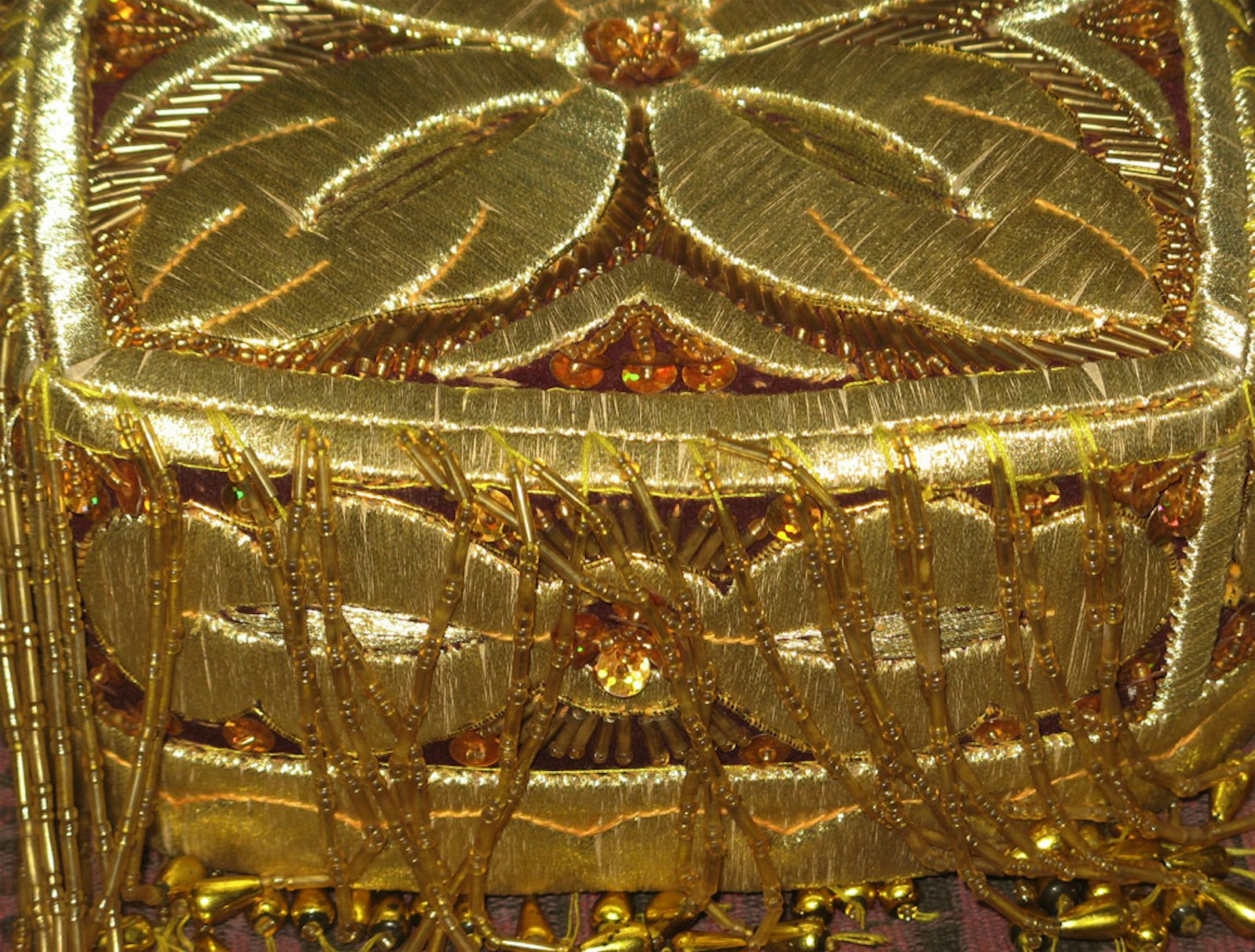This wedding headdress was among the first pieces I bought, and it has proved lucky as my collection has simply grown over the years. It was early in my days of collecting, and I would religiously visit every exhibition in Delhi, seeking textiles. In 2007, the SAARC (South Asian Association for Regional Cooperation) countries held an exhibition, and Afghanistan was a new entrant. I visited the exhibition twice, but it was on the second visit that I chanced upon this headdress. It came with a huge dress that I could not afford.
The woman working in the stall spoke good English, and it was fun to converse. She introduced herself as Mariam and was from Mazar-i-Sharif. She was an embroiderer herself and worked with a lot of women who were into embroidery. She told me the headdress and dress were actually a Uzbekistan wedding ensemble that was made in Mazhar-i-Sharif to be sent to Uzbekistan. It was interesting to learn that traditional items were being made in Afghanistan for export to Uzbekistan. Mariam told me that a lot of this work is today made in Afghanistan—in Mazar-i-Sharif and Kandahar—and exported.

The headdress, when worn. It measures 6 inches wide by 6 inches long (15.2 x 15.2 cm) by 3 inches (7.6 cm) high. The beaded trimmings measure 9 inches (22.9 cm) on three sides. In the front, they are 4 inches (10.2 cm). It is embroidered entirely with gold threads.
The headdress and dress were worn by the bride for her wedding. The embroidery is called kalabattu doozi; doozi means “embroidery” in the local Pashtun language spoken in Afghanistan. It is similar to Indian zardozi, a type of elaborate metal embroidery that is often created using gold and silver threads and beadwork. It is also similar to the lesser-known but very vibrant gold and silver embroidery from Bukhara in Uzbekistan. This type of embroidery was done by men and, covers the entire garment.
The stitching in kalabattu doozi is raised and thick and covers the entire base of the fabric, which is usually velvet, silk, or satin. At one time it was reserved for royalty, but today it is used in ceremonial dresses or for weddings. Huge coats, headdresses, and shoes are beautifully embroidered in glittery gold, which gives the piece an extremely rich look. Unlike the gold and silver embroidery from Uzbekistan, today kalaabattu doozi is stitched by the women in Mazar-i-Sharif.
The headdress is exceptionally fine. It is like a box with five sides. The open side of the box fits onto the head. The base is made of sturdy cardboard-like material covered almost completely with a silk or velvety. The headdress is embroidered using gold-colored metallic threads in floral patterns. The embroidery is similar to satin stitch and covers the entire base of the piece. The raised floral motif is done on the top of the cap and is carried out onto the four sides. The entire front, sides, and back have tiny golden beaded strings with teardrop-shaped beads at the end. The strings of beads along the front of the piece are shorter, almost like fringe, while the ones at the back are longer and give the cap a festive look.
Chitra Balasubramaniam writes, collects, and experiments with textiles and follows her passions by writing about food, travel, and heritage. She dabbles with stock-investment analysis and research. She also runs a small travel guide at visitors2delhi.com. Find her on Instagram as @visitors2delhi.

